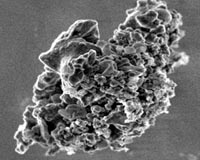 |
Paris, France (ESA) Nov 05, 2009 ESA's comet chaser Rosetta will swing by Earth for the last time on 13 November to pick up energy and begin the final leg of its 10-year journey to comet 67P/Churyumov-Gerasimenko. ESA's European Space Operations Centre will host a media briefing on that day. This will be the third Earth swingby, the last of Rosetta's four planetary gravity assists. Closest approach to Earth is expected at 08:45 CET (07:45 UT). The swingby will provide exactly the boost Rosetta needs to continue into the outer Solar System. The spacecraft is scheduled for a close encounter with asteroid 21 Lutetia in July next year, before it goes into hibernation early in 2011, only to wake up in early 2014 for approach to 67P/Churyumov-Gerasimenko. As the most primitive objects in the Solar System, the chemical composition of comets has not changed much since their formation. They preserve a record of the early Solar System. When it reaches 67P/Churyumov-Gerasimenko in 2014, Rosetta will be the first mission to orbit and deploy a lander on a comet. It will help to reconstruct the history of our neighbourhood in space. The spacecraft is operated from ESOC, ESA's European Space Operations Centre, Darmstadt, Germany. Share This Article With Planet Earth
Related Links The Rosetta blog ESA Rosetta Asteroid and Comet Mission News, Science and Technology
 'Ultra-Primitive' Particles Found In Comet Dust
'Ultra-Primitive' Particles Found In Comet DustWashington DC (SPX) Nov 03, 2009 Dust samples collected by high-flying aircraft in the upper atmosphere have yielded an unexpectedly rich trove of relicts from the ancient cosmos, report scientists from the Carnegie Institution. The stratospheric dust includes minute grains that likely formed inside stars that lived and died long before the birth of our Sun, as well as material from molecular clouds in interstellar space. ... read more |
|
| The content herein, unless otherwise known to be public domain, are Copyright 1995-2009 - SpaceDaily. AFP and UPI Wire Stories are copyright Agence France-Presse and United Press International. ESA Portal Reports are copyright European Space Agency. All NASA sourced material is public domain. Additional copyrights may apply in whole or part to other bona fide parties. Advertising does not imply endorsement,agreement or approval of any opinions, statements or information provided by SpaceDaily on any Web page published or hosted by SpaceDaily. Privacy Statement |